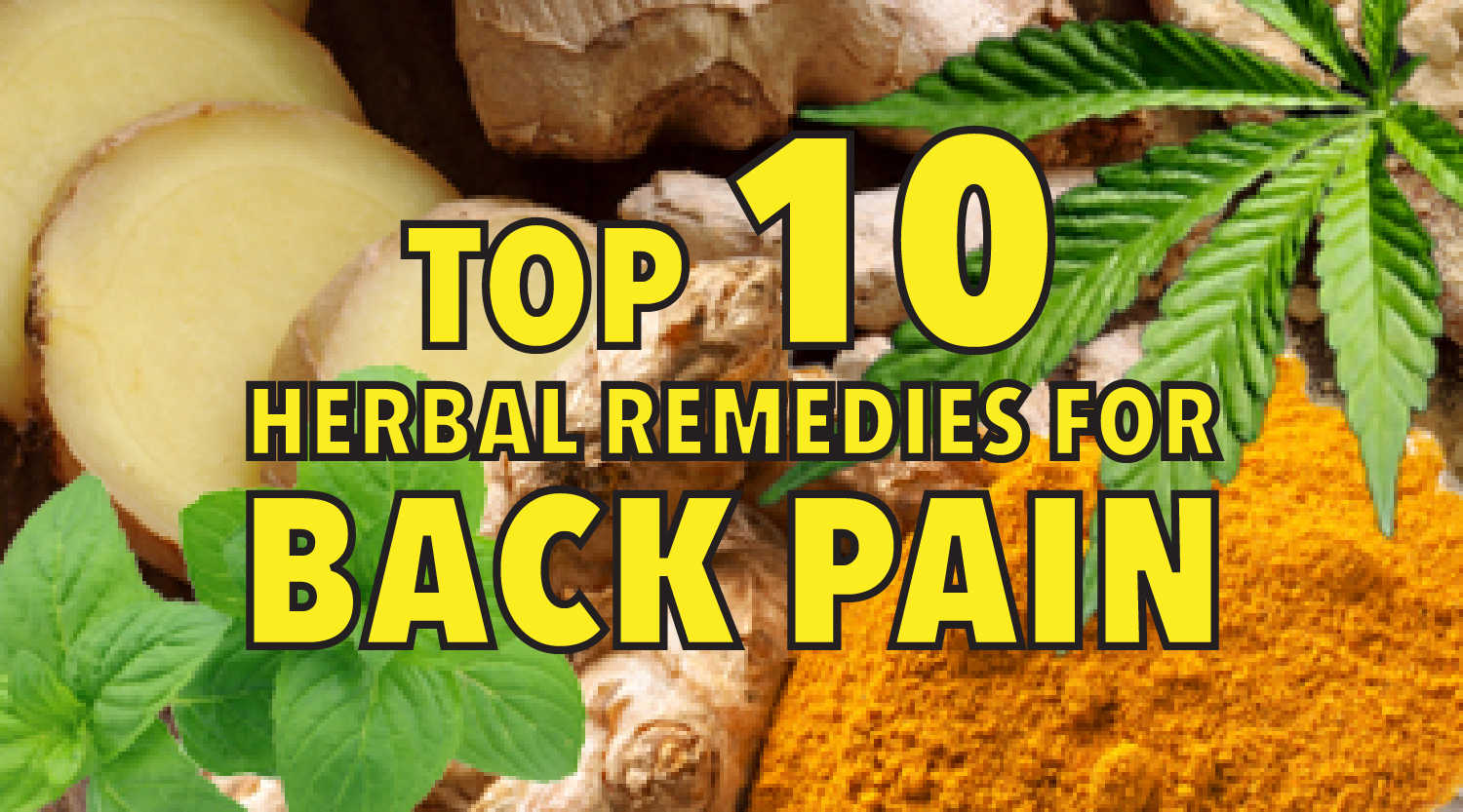Top 10 natural herbal remedies for back pain
09/30/2015 / By John Allen

Considering that some 80% of adults have back problems at some point in their life, the human spine seems to be an engineering failure. Each year, 13 million people go to the doctor for chronic back pain, with over 4 million Americans either chronically or temporarily disabled. The problem plagues both men and woman alike, and is the most common cause of job-related disability and missed work days.(1)
If you have back pain and don’t want to take addictive pain killers, have steroids injected into your spine or risk being paralyzed by a surgical operation, consider using herbal remedies instead—most of which are available as dried extracts (powders, capsules or tablets), tinctures/liquid extracts and teas.(1)
Here’s a handy list of the top 10 common herbal remedies for back pain.
Turmeric
Turmeric, with its active ingredient curcumin, is effective as a natural anti-inflammatory, providing muscular pain relief. It’s available in supplement form, or you can just take some from your spice rack and sprinkle it into your cooking.(2)
Ginger
Ginger is also a natural anti-inflammatory and has been used for pain relief in China for millennia. Of course, it’s a common spice in many Asian recipes and lends itself well as an ingredient for tea. Ginger can also be applied topically, by grating the root, wrapping it in cheesecloth, heating it and applying directly to the back.(2)
Valerian root
The inability to relax due to stress only makes back muscles tighter and more painful. Valerian acts as a tranquilizer, reducing nerve sensitivity. Unlike other herbal teas, valerian doesn’t taste very good as a beverage, so many people prefer to take it in capsule form.(2)
100% organic essential oil sets now available for your home and personal care, including Rosemary, Oregano, Eucalyptus, Tea Tree, Clary Sage and more, all 100% organic and laboratory tested for safety. A multitude of uses, from stress reduction to topical first aid. See the complete listing here, and help support this news site.
Red pepper (Cayenne)
This is another spice that you probably already have handy in your cabinet. The active ingredient is capsaicin, a potent pain-relieving natural chemical. It’s conveniently available as a topical analgesic cream. However, if you’re really adventurous, you can just rub the juices of a red pepper directly onto your skin.(3) It works by temporarily reducing a chemical that contributes to inflammation. Pain reduction usually starts after a few days of applying the capsaicin cream to the skin.(1)
Devil’s claw
For centuries, the tribes of the Kalahari Desert have sworn by the healing powers of this plant, which gets its name from the “claws” growing from the plant’s fruit. Although it doesn’t yet have much science to back it up, one study found that more than 50% of people with osteoarthritis of the knee or hip or low back pain who took devil’s claw reported less pain and better mobility after eight weeks.(1)
Willow bark
Sometimes referred to as “nature’s aspirin,” willow bark contains compounds called salicylates, from which aspirin is derived. One academic study concluded that it is more effective than aspirin and other nonsteroidal anti-inflammatories for long-term treatment of lower back pain.(4)
Cramp Bark
No, cramp bark won’t turn your face the color of an eggplant, as it did to the character George Costanza in an episode of popular television show Seinfeld. In reality, tea made from cramp bark is well-known for its muscle relaxation properties. Just add one teaspoon of cramp bark to one cup of boiling water, steep for 10 minutes and drink.(5)
Alpha-lipoic acid
This all-natural antioxidant compound has been shown to help alleviate certain types of chronic lower back pain, without causing harmful side effects. For example, a 2009 study published in the International Journal of Immunopathology and Pharmacology provides evidence that alpha-lipoic acid can be potentially beneficial in treating back pain caused by nerve damage.(6)
Mint
There are a bewildering array of natural mints. If your mother ever rubbed Vicks VapoRub on your chest when you were a kid, you’re already familiar with the warm sensation and decongesting vapors of menthol and camphor, two substances which occur naturally in various mints. When applied topically to the back, mint oils can provide soothing relief.(3)
Cannabis
In the 1930s, the U.S. government outlawed Cannabis and began referring to it by the Spanish slang term marijuana partly in an attempt to demonize Mexican immigrants by linking them to “reefer madness” and gain public support for their mass deportation.(7) However, medical marijuana remained legal for medical purposes until 1970, when the widespread use of the herb led the federal government to ban it completely. However, there’s substantial scientific evidence that Cannabis has valid medical applications, and it has become legal in some states for that purpose. Published research in respected medical journals has proven it effective in providing pain relief, making it potentially beneficial to patients suffering from a wide range of health problems, including back pain.(8) In addition to formal testing, marijuana has also been tested informally, over many decades, by millions in the general public, many of whom tout the herb’s pain-relieving properties.(9)
Eucommia
Used for thousands of years in China for back and joint pain, Eucommia is believed to encourage the development of collagen, a key protein in the body’s connective tissues, such as tendons and ligaments. It is most often used in combination with other supportive herbs.(2)
Sources:
(1) UMM.edu
(2) DoctorOz.com
(4) Prevention.com
(5) NaturalNews.com
(6) NaturalNews.com
(7) Amazon.com
(8) DrugPolicy.org
(9) PewResearch.org
Tagged Under:




















